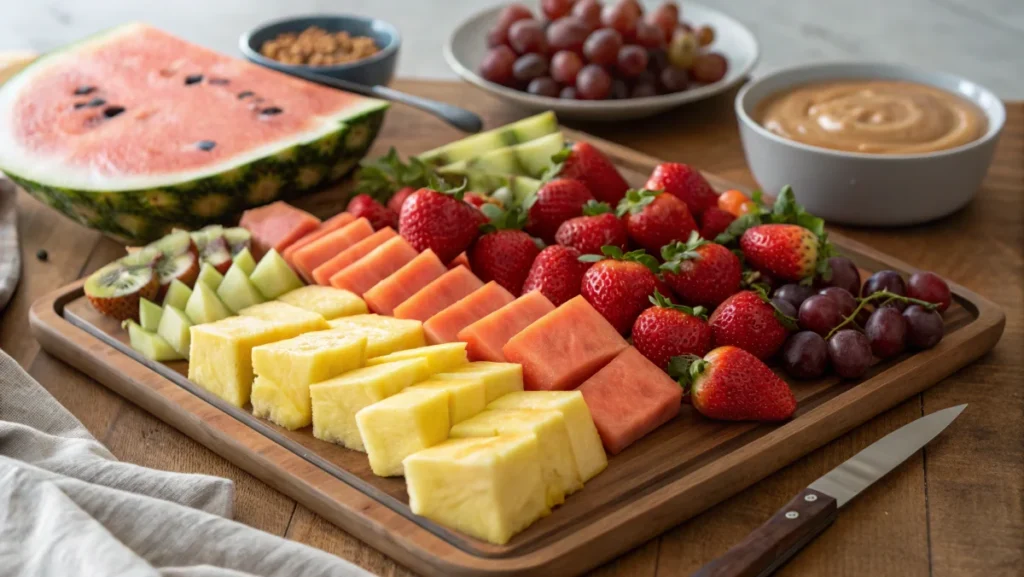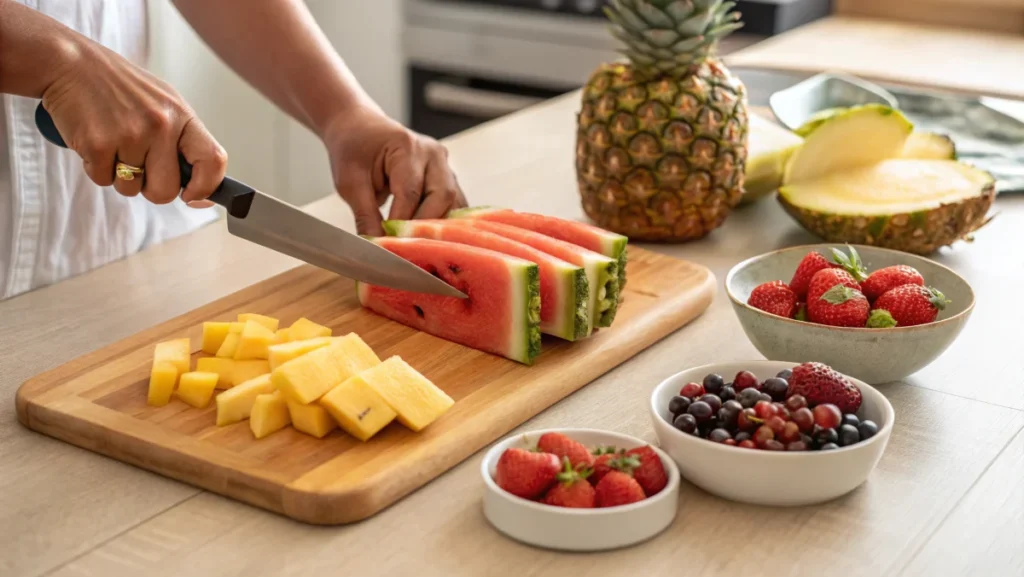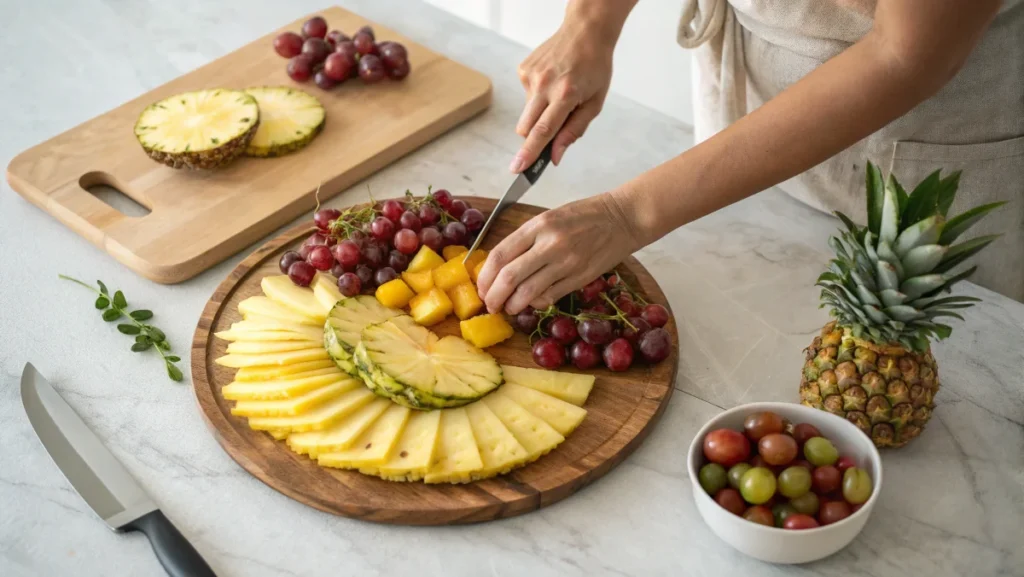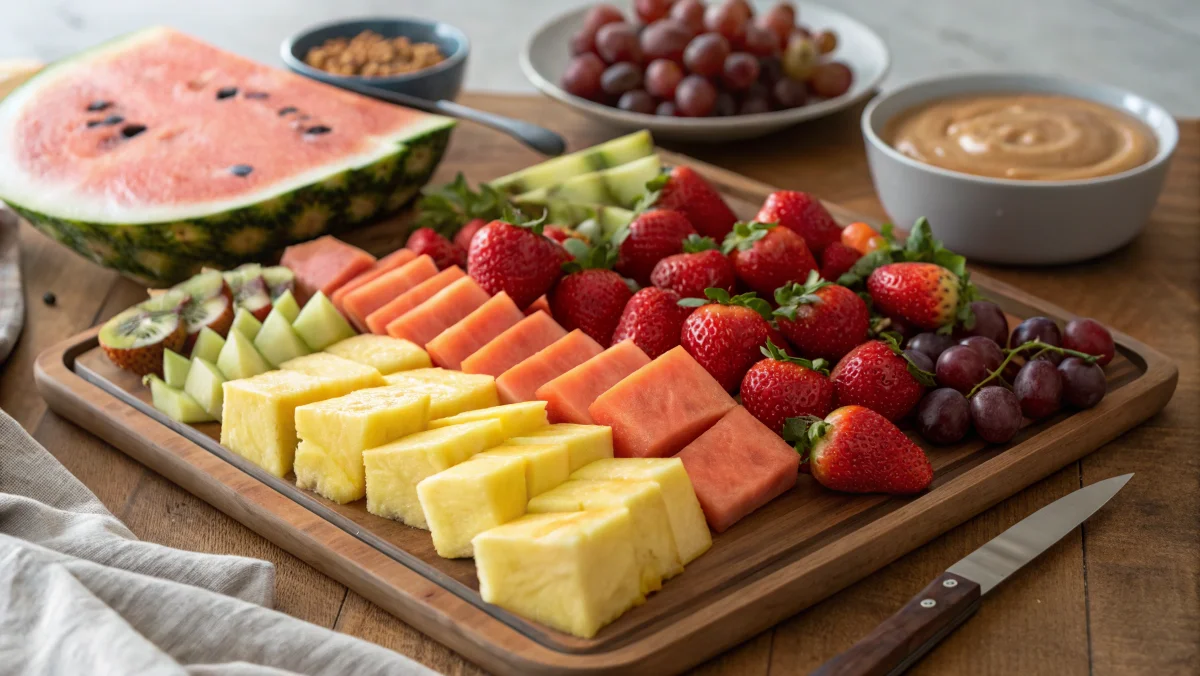When organizing a gathering, one of the most common concerns for hosts is ensuring there is enough food for all guests. Fruit for 25 guests, being a popular and healthy option, is suitable for both casual and formal events. However, a frequent question arises: how much fruit for 25 guests is needed? Without understanding proper portion sizes and the variety of fruits to include, this can be difficult to estimate accurately.
To avoid the inconvenience of running out of fruit or dealing with excessive leftovers, it is important to plan accordingly. Consider factors like the type of event, the preferences of your guests, and the way the fruit will be presented. Proper planning ensures your event is not only enjoyable but also resourceful. Additionally, for tips on preparing cost-effective party trays and comparing the costs of making your own versus buying pre-made ones, check out Cheaper to Make or Buy Party Platters? Fruit & Veggie Tray Cost-Saving Tips. This resource can help you balance quality and budget, ensuring a smooth and successful gathering.

Understanding Portion Sizes for Fruit
Knowing the right portion sizes for fruit is key when planning for a group. Typically, fruit portions can be measured in weight or servings, depending on the type of fruit. For instance, an average serving of fruit is about 1 cup, which is approximately 150-180 grams for most varieties.
It is important to remember that different fruits have varying densities, so the amount you serve might differ. For example:
- Berries: 1 cup of berries (such as strawberries or blueberries) equals about 150 grams.
- Melons: 1 serving of melon (such as watermelon) could be 1/2 cup (around 80 grams).
- Grapes: A serving of grapes is usually around 1/2 cup or 100 grams.
These sizes will help you gauge how much fruit you need per person. Generally, the standard recommendation is about 2 to 3 servings per person for fruit. Therefore, for 25 guests, the total amount will depend on how many varieties you plan to serve.
Factors That Affect Fruit Quantity for Guests
When deciding how much fruit do I need for 25 guests?, it’s important to consider several influencing factors. While the general portion size is helpful, certain elements can change the amount of fruit needed. These factors include:
- Type of Event: A casual party might require less fruit compared to a formal sit-down dinner. If you’re serving fruit as part of a buffet, guests are likely to take smaller portions.
- Appetite of Guests: Some people might prefer larger portions, while others may only want a small taste. Knowing your guests’ preferences can help adjust the amounts.
- Other Food Options: If fruit is the main dessert, you’ll likely need more fruit. If it’s part of a larger spread with other options, less fruit might suffice.
- Season and Availability: Fresh fruit can be pricier or harder to find depending on the season, which could affect the amount of fruit you buy.
With these factors in mind, you can better determine the right amount of fruit for your event.
How to Calculate Fruit Per Person
To calculate how much fruit you need per person, start by determining the total number of servings required. For example, if each guest is expected to have around 2 servings of fruit, multiply the number of guests (25) by 2 servings. This gives you 50 servings.
However, portion sizes for different fruits will vary, so you’ll need to adjust the total quantity for each type of fruit. For instance, if you are serving 3 types of fruit, such as melon, berries, and grapes, divide the total servings by the types of fruit.
Here’s a breakdown of how you might calculate:
- Total servings needed: 50
- Fruit 1 (e.g., melon): 50 servings ÷ 3 fruits = 17 servings of melon
- Fruit 2 (e.g., berries): 17 servings
- Fruit 3 (e.g., grapes): 17 servings
Now, calculate the amount per fruit type:
- 17 servings of melon could be roughly 8-10 pounds, depending on how much the melon weighs.
- 17 servings of berries could be about 2-3 pounds.
- 17 servings of grapes may require 2-3 pounds.
With this simple formula, you can adjust the amounts to meet your specific event needs.

Table of Contents
Choosing the Right Types of Fruit for a Gathering
Choosing the right types of fruit is crucial when hosting a gathering. You’ll want to select fruits that will appeal to a wide range of guests, while also considering practicality. Some fruits are easier to prepare and serve than others, and some might require more effort. Here are some key considerations:
- Popular Fruits: To ensure you have broad appeal, select familiar fruits like apples, bananas, grapes, and strawberries. These fruits are generally liked by most guests.
- Unusual Fruit Options: You might also include more fascinating fruits like dragonfruit, kiwi, or starfruit. While they can be fun to try, they may not be as universally liked.
- Ease of Preparation: Choose fruits that are easy to cut and serve. Watermelon, pineapples, and berries are great choices as they can be quickly sliced and served.
Including a balance of sweet, tart, and tropical options ensures variety without overwhelming your guests with unfamiliar choices.
Seasonal Fruits vs. Year-Round Options
Another factor in choosing fruit is whether it is in season. Seasonal fruits are often fresher and more affordable. However, not all fruits are available year-round, so it’s important to plan accordingly.
- In-Season Fruits: Depending on the time of year, in-season fruits might include berries in the summer, apples and pears in the fall, or citrus fruits in the winter. These are often the most flavorful and cost-effective options.
- Year-Round Fruits: Some fruits, like bananas, grapes, and apples, are available year-round and can serve as reliable choices no matter the season.
When selecting your fruit, consider the current season to maximize flavor, quality, and cost-effectiveness.
Balancing Variety and Quantity for 25 Guests
When planning how much fruit do I need for 25 guests?, balancing variety and quantity is key. Offering too few options can leave guests disappointed, while serving too many different fruits can overwhelm your guests and cause wastage. Here’s how to find a balance:
- Variety: Choose around 3 to 5 different fruits to serve. This provides enough variety without being excessive. For example, include a mix of melons, citrus fruits, grapes, and berries.
- Quantity: Stick to approximately 2-3 servings of fruit per guest. Since you have 25 guests, aim for 50 servings of fruit across all the types you’re offering.
This balance will ensure that everyone has enough to enjoy while still offering plenty of options.
Preparing Fruit Platters for 25 People
A well-prepared fruit platter can be the centerpiece of your event. Presentation matters just as much as the quantity. Here are some tips for preparing fruit platters for 25 guests:
- Size of Platters: Opt for large platters or bowls, depending on the available space. A standard platter should comfortably hold 3-4 different types of fruit and look abundant without being overcrowded.
- Color and Texture: Mix colorful fruits to create a visually appealing spread. Include a variety of textures such as juicy melon, crunchy apples, and soft berries.
- Cutting and Serving: Pre-cut fruits into bite-sized pieces for easy consumption. You may also want to create fruit kabobs for a fun, portable option.
A good presentation can elevate the entire experience, so take time to arrange the fruit thoughtfully.

Accounting for Dietary Preferences and Allergies
When hosting a gathering, it’s crucial to consider dietary preferences and allergies to ensure everyone can enjoy the fruit. Here are some points to keep in mind:
- Common Allergies: While fruit allergies are rare, some people may be allergic to certain fruits like kiwi or peaches. Ensure that you provide alternatives in case anyone has allergies.
- Dietary Preferences: Some guests may be following specific diets, such as vegan or gluten-free, so offering only fresh fruit is a safe and inclusive option.
- Sugar Sensitivity: Some guests may need to avoid sugary fruits. Offering lower-sugar options like berries, melons, or citrus can be a thoughtful choice.
Be sure to ask your guests in advance if they have any specific dietary restrictions or preferences.
How to Store Fruit Before the Event
Proper storage is essential to ensure that your fruit stays fresh and appetizing until your event. Here’s how to store different types of fruit:
- Refrigeration: Store fruits like berries, grapes, and cut melons in the refrigerator to keep them fresh. Make sure they’re in airtight containers to preserve moisture.
- Room Temperature: Fruits like bananas, apples, and citrus can be kept at room temperature until closer to serving time.
- Pre-Cutting: If you plan to pre-cut fruit, do so just a few hours before the event to avoid spoilage.
Proper storage prevents fruit from becoming overripe or dried out before your event, ensuring it looks and tastes great.
Reducing Waste: What to Do With Leftover Fruit
It’s common to have leftover fruit after an event, and finding ways to reduce waste is essential. Here are some ideas for what to do with the extra fruit:
- Smoothies: Use leftover fruit to make refreshing smoothies. You can combine various types of fruit along with yogurt or juice for a quick and easy snack.
- Fruit Salad: Create a fruit salad using any remaining fruit. Add a drizzle of honey or lemon juice for extra flavor.
- Baking: Overripe fruit like bananas can be used in baking. Consider making banana bread or muffins with any leftovers.
These options can help minimize waste while providing delicious treats after the event.
Quick Tips for Presenting Fruit to Impress Your Guests
A beautifully presented fruit display can make a big impact. Here are some quick tips for impressing your guests with your fruit arrangements:
- Use Different Heights: Arrange fruit on tiered trays to add dimension to your display.
- Add Garnishes: Fresh mint leaves or citrus slices can be used to garnish your platters and add color.
- Creative Serving: For a fun twist, serve fruit in hollowed-out melons or pineapple bowls for a unique presentation.
These small details can elevate the experience and make the fruit display look more inviting and elegant.
A Checklist for Buying and Serving Fruit for 25 Guests
To ensure you have everything you need, here’s a checklist for buying and serving fruit for 25 guests:
- Fruit Types: Choose 3-5 types of fruit.
- Portion Size: Plan for 2-3 servings per person.
- Freshness: Purchase fruit a day or two before the event to ensure maximum freshness.
- Presentation: Get serving platters, bowls, or tiered trays.
- Dietary Considerations: Check for allergies or preferences in advance.
- Storage: Have a plan for refrigerating or storing fruit before the event.
This checklist will guide you through the entire process, from buying to serving.
FAQs:
How much fruit to feed 25 people?
To feed 25 people, you’ll need about 8-10 pounds of assorted fruit. This amount allows for roughly 1/3 to 1/2 pound of fruit per person. Make sure to choose a mix of popular fruits like grapes, melon, strawberries, and pineapple.
How much fruit do I need for 30 people?
For 30 people, you’ll need approximately 10-12 pounds of fruit. You can use a variety of fruits, such as apples, oranges, grapes, and berries, to provide a well-rounded selection that caters to different tastes.
Is it cheaper to buy a fruit tray or make one?
It’s typically cheaper to make your own fruit tray. Buying pre-made trays from stores or caterers often includes a markup for preparation and packaging. By purchasing fresh fruits and preparing them yourself, you can save money, especially for larger gatherings.
How many people does a pound of fruit feed?
On average, a pound of fruit feeds about 2-3 people. This estimate can vary depending on the type of fruit, as some fruits are denser and heavier than others (e.g., grapes versus watermelon).
Conclusion
In conclusion, planning how much fruit to prepare for 25 guests requires thoughtful consideration of portion sizes, the types of fruit, and your guests’ preferences. With the guidance in this article, you can confidently estimate the right amount and prepare a colorful, healthy spread that appeals to everyone. Whether you opt for seasonal selections or year-round staples, proper preparation and storage are key to a successful event. To explore the best fruit options for your tray, check out Best Fruits for a Fruit Tray: Sweet and Fresh Options for Every Occasion.

